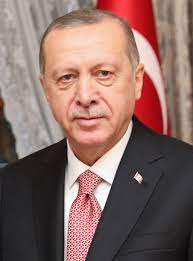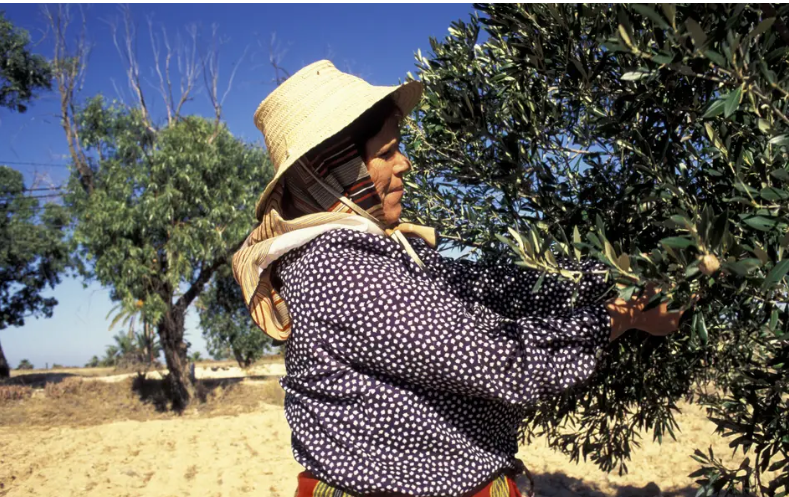By Ibrahim Karagul
We are closely monitoring Turkish President Recep Tayyip Erdoğan’s visits to Angola, Nigeria, and Togo.
I have three fronts, as well as a litany of other matters, plaguing my mind. One of these is Turkey’s efforts to delineate its roadmap in Africa. It includes a country’s jubilant return to the 21st century between “far fronts and far goals.” I have on the brain the relentless struggle Turkey has been putting up for years, especially in the last two decades, against the plans aimed at besieging it and suffocating it in Anatolia.
Three gates: They closed them, we re-opened them
They are trying to close off the “West door” to Turkey. They are trying to close the “East door” (Caucasus) and the “south door” to us. They rewrote the regional scenario from the early 20th century to dress today’s events. They made plans to banish Turkey from history, from the region, to keep it under control, to “shrink” it, and implemented these plans. Western projects targeting Turkey were all established on closing these “gates.”
Yet they were surprised by an extraordinary resistance. When I said, “Turkey is the surprise of the 21st century,” I was referring to the rise of a power that not only upended these plans and superseded a state level, reaching a regional dimension, but also put paid to all plans targeting the earth’s “Middle Zone.”
They first attacked the southern gate
Turkey not only resisted but also made intelligent and courageous interventions that would open all gates. These interventions were on a global scale. Those designing maps for the region, on the other hand, were given regional-scale responses.
The first intervention targeted the southern gate. The operation aimed at forming a zone, which we refer to as the “terror corridor,” between Turkey and the Muslim-Arab world was negated. That project, too, failed. However, the necessary interventions are not yet completed. The remaining flaws must also be taken care of to form a “peace zone” from the Iranian border to the Mediterranean, to completely eliminate all the walls to be built, and negate the sly plans aimed at dividing the region into two clear blocs.
What is Iran trying to do?
Plans calibrated to permanently keep the “eastern gate” closed, to sever the connection between Turkey and Central Asia forever, were shattered with the Karabakh war. The most effective geopolitical intervention of Turkey’s history, including the Ottoman period, was carried out.
However, that gate could not be fully opened. Iran’s attempts, in particular, to re-close that door are no longer a secret. Turkey and other supporting countries are preparing for something quite the contrary. It seems that if Armenia cannot break the Iran effect, there may be a new intervention – this time “multi-state – in question in the region.
Will there be a Crusader attack?
The most intense preparations right now are at the West gate. The strategy launched in the East Mediterranean with the Syria war, aimed at confining Turkey within its own shores, also collapsed. We further witnessed the geopolitical intervention on land in the East Mediterranean also being conducted at sea with the same intensity. But the “plan to besiege” was expanded to the Aegean.
It is as though the military preparations intensified by the U.S. and Greece, along with France, as well as certain regional countries, on Greek territory are refreshing our memories of the Ottoman-European or East-West altercation that has been ongoing for centuries. Or, perhaps, the Crusader attacks!
The plan is to ‘strike Turkey’, not ‘defend the West’
Military bases such as Alexandropouli that were established at the border, the military buildup at the western gate, are not the result of our “belligerence,” but their objective to siege Turkey from the West. In fact, the aim is not to “defend the West,” but rather to “strike Turkey.” There is no doubt that these heated preparations will lead to more destructive results than the others. It is also certain that it poses an “imminent threat.” What will Turkey do? It will do exactly what it did at the other “gates.” Whatever is necessary to keep it open. It will never hesitate in any of its efforts.
This is because Turkey knows the “Western world order” has ended. It knows that the West’s power to design regions and countries has weakened. It knows that as the West is stagnating and regressing, while Turkey is rapidly making a comeback with the mind of empires.
Why is the Turkish media hesitant? What are we really doing in Africa?
I have on the brain Turkey’s “effective,” wise, and long-term plans in North Africa and Central Africa, unafraid to take on the world’s superpowers, which is followed a little hesitantly, a little carelessly, and a little blindly by the Turkish media. Turkey’s journey to Africa’s depths is pioneering the shattering geopolitical outcomes – and it will lead to more. Beyond bilateral relations, these outcomes are shaking Africa’s colonial history, its colonial tradition, the authority of colonialist powers that were thought unshakable, and deciphering colonial codes.
There is the mental transformation of the great collaboration and partnership project beyond Libya and Somalia, reaching from North Africa to Central Africa. Great breakthroughs are being made, not only in terms of modernizing common fields, in defense and security, but also the economy, culture, agriculture, and the vision for the future.
We’re not here to dig water wells alone. What drove France up the wall?
I have on the brain how Turkey’s representation of “hope” in Africa drove France mad, worried the U.S., and in fact, made China think long and hard. The concerns of great powers, central countries over “Turkey’s effect” are already reflected in Western media almost daily anyway. We did not just come here to dig a water well or give humanitarian aid. As a matter of fact, we did not come to sell drones either. We came here to build strong partnerships of the future, to kickstart long marches.
I have on the brain the internal ‘front’ built to stop all this
Regardless of where we reach in Africa, Central Asia, the Middle East, regardless of where we make wonderful ventures, we always find the world’s most powerful against us. Look carefully and you will always see Turkey wrestling with the big guns. This shows a country’s wisdom, pursuit for power, and its great plans. Hence, when referring to “Turkey’s rise,” we are trying to put forth something new after the Seljuks and the Ottomans.
It is with these thoughts that when observing Erdogan’s Africa visit, my mind is plagued with “the front built within” to negate all these efforts and developments; the efforts aimed at stopping the country of great ideals with petty plans.
To overcome this is, as a nation, our duty.





 TRENDING11 months ago
TRENDING11 months ago
 PROFILE9 months ago
PROFILE9 months ago
 BUSINESS & ECONOMY3 years ago
BUSINESS & ECONOMY3 years ago
 BUSINESS & ECONOMY3 years ago
BUSINESS & ECONOMY3 years ago
 BUSINESS & ECONOMY3 years ago
BUSINESS & ECONOMY3 years ago
 HALAL ECONOMY10 months ago
HALAL ECONOMY10 months ago
 BUSINESS & ECONOMY2 years ago
BUSINESS & ECONOMY2 years ago
 SPECIAL REPORTS4 months ago
SPECIAL REPORTS4 months ago



